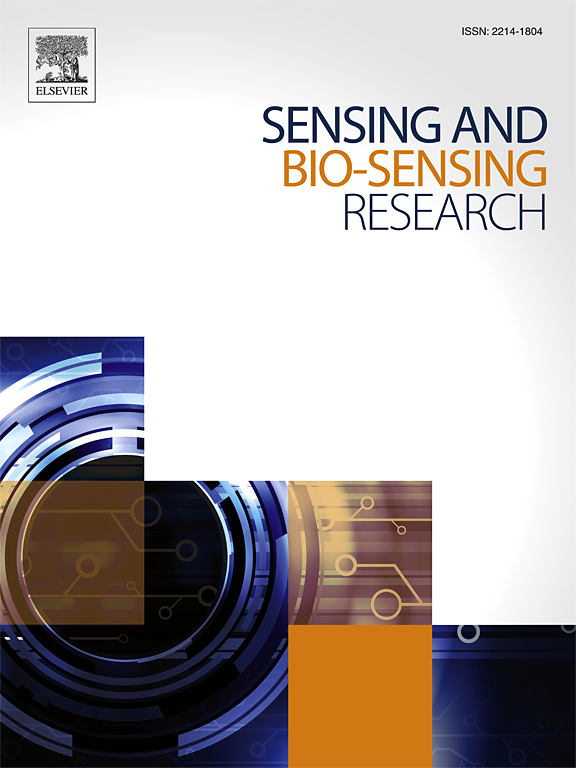Thermal reduction synthesis approach of reduced graphene oxide for the preparation of a label-free and prompt immuno sensing of Salmonella enterica via electrochemical techniques
IF 4.9
Q1 CHEMISTRY, ANALYTICAL
引用次数: 0
Abstract
This work comprises an immunosensor fabrication decorated with reduced graphene oxide (rGO) onto Indium tin oxide (ITO) coated electrodes to detect Salmonella enterica antigen. The rGO was synthesized with a modified Hummer technique and characterized via UV, XRD, FTIR, RAMAN and SEM techniques. The synthesized rGO was optimized at different concentrations to develop an immunosensor. An EDC-NHS interaction immobilized the monoclonal antibody against the selected antigen. Electrochemical techniques such as electrochemical impedance spectroscopy and cyclic voltammetry were deployed to characterize the modified electrodes in 5 mM Zobell's solution, followed by a differential pulse voltammetry analysis for sensor validation. The fabricated sensor has a 44 CFU/mL detection limit (LoD) and a 135 CFU/mL quantification limit (LoQ) with a linear range of 101–107 CFU/mL. This proposed immunosensor can be applied to any sample containing traces of Salmonella enterica.
还原氧化石墨烯的热还原合成方法,用于制备通过电化学技术对肠炎沙门氏菌进行无标记和快速免疫传感的方法
这项工作包括将还原氧化石墨烯(rGO)装饰在氧化铟锡(ITO)涂层电极上的免疫传感器制造,以检测肠道沙门氏菌抗原。采用改进的Hummer技术合成了还原氧化石墨烯,并通过UV、XRD、FTIR、RAMAN和SEM等技术对其进行了表征。对合成的氧化石墨烯在不同浓度下进行优化制备免疫传感器。EDC-NHS相互作用固定单克隆抗体对抗选定的抗原。利用电化学阻抗谱和循环伏安法等电化学技术,在5 mM Zobell溶液中对改性电极进行表征,然后采用差分脉冲伏安法分析传感器验证。该传感器检测限为44 CFU/mL,定量限为135 CFU/mL,线性范围为101 ~ 107 CFU/mL。这种提出的免疫传感器可以应用于任何含有肠道沙门氏菌痕迹的样品。
本文章由计算机程序翻译,如有差异,请以英文原文为准。
求助全文
约1分钟内获得全文
求助全文
来源期刊

Sensing and Bio-Sensing Research
Engineering-Electrical and Electronic Engineering
CiteScore
10.70
自引率
3.80%
发文量
68
审稿时长
87 days
期刊介绍:
Sensing and Bio-Sensing Research is an open access journal dedicated to the research, design, development, and application of bio-sensing and sensing technologies. The editors will accept research papers, reviews, field trials, and validation studies that are of significant relevance. These submissions should describe new concepts, enhance understanding of the field, or offer insights into the practical application, manufacturing, and commercialization of bio-sensing and sensing technologies.
The journal covers a wide range of topics, including sensing principles and mechanisms, new materials development for transducers and recognition components, fabrication technology, and various types of sensors such as optical, electrochemical, mass-sensitive, gas, biosensors, and more. It also includes environmental, process control, and biomedical applications, signal processing, chemometrics, optoelectronic, mechanical, thermal, and magnetic sensors, as well as interface electronics. Additionally, it covers sensor systems and applications, µTAS (Micro Total Analysis Systems), development of solid-state devices for transducing physical signals, and analytical devices incorporating biological materials.
 求助内容:
求助内容: 应助结果提醒方式:
应助结果提醒方式:


